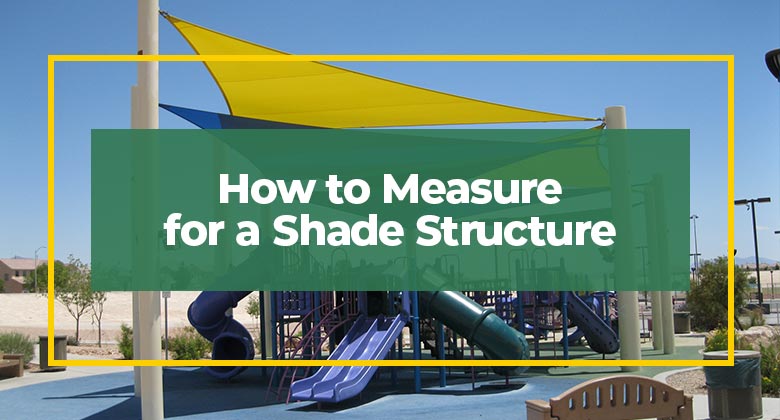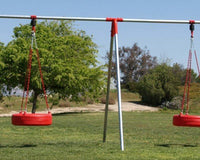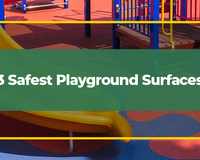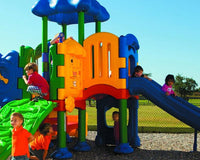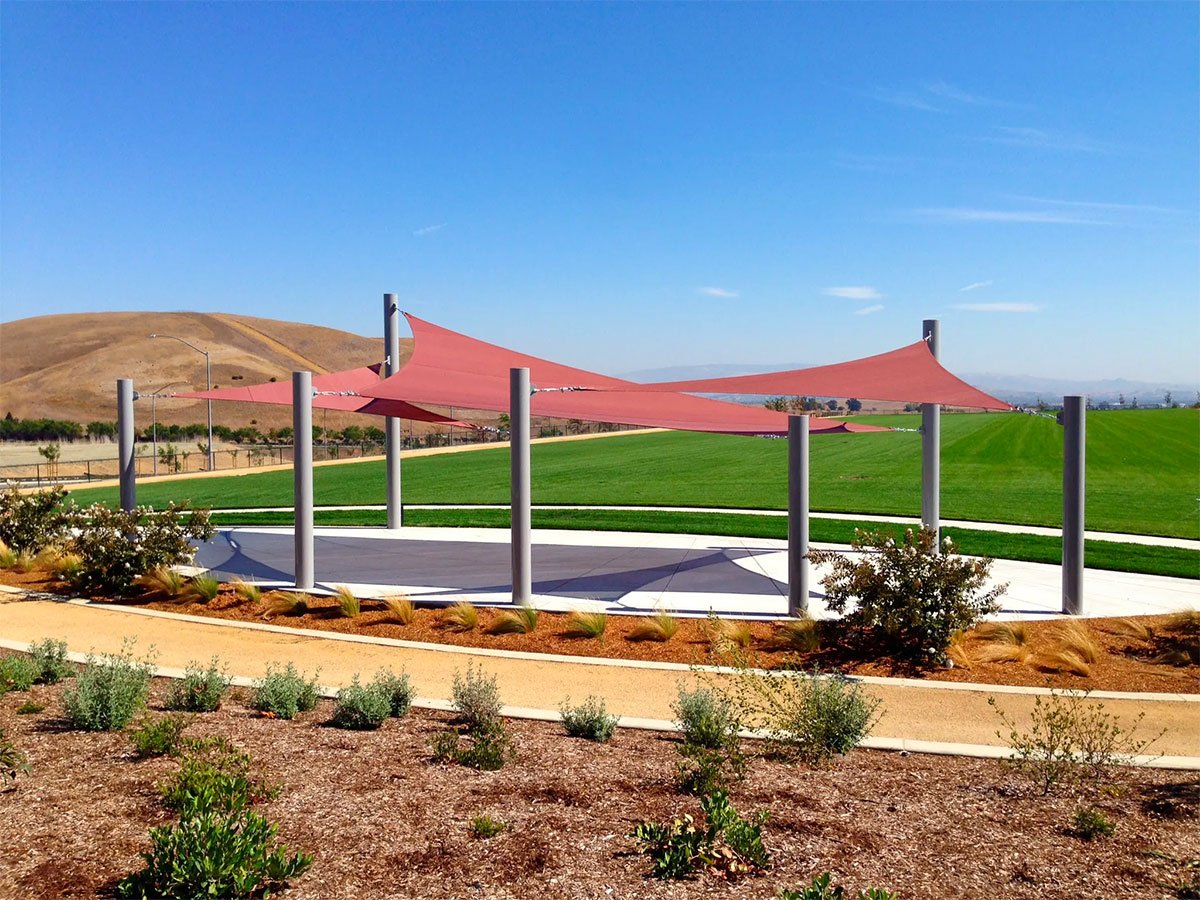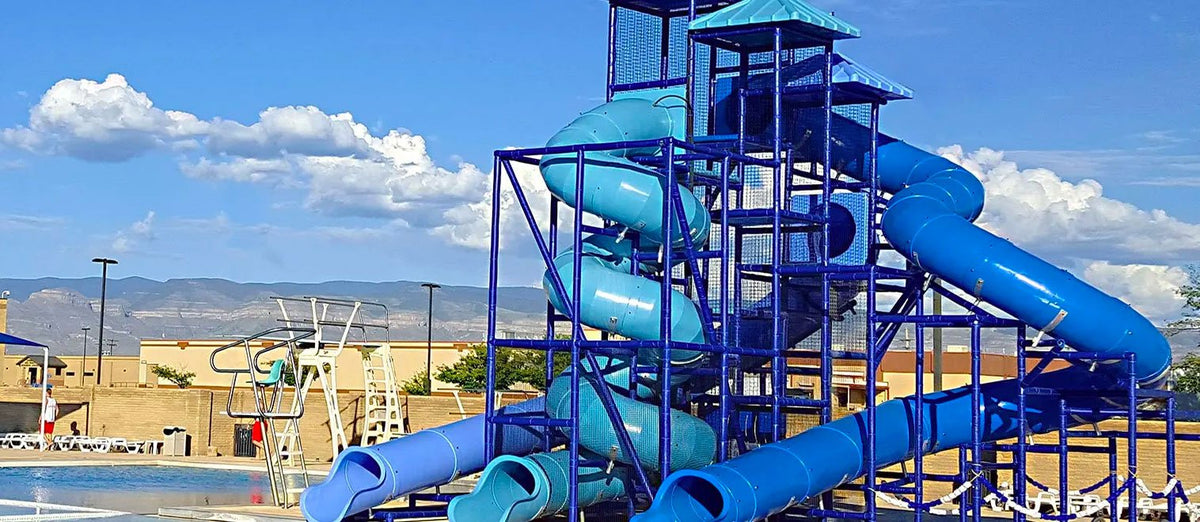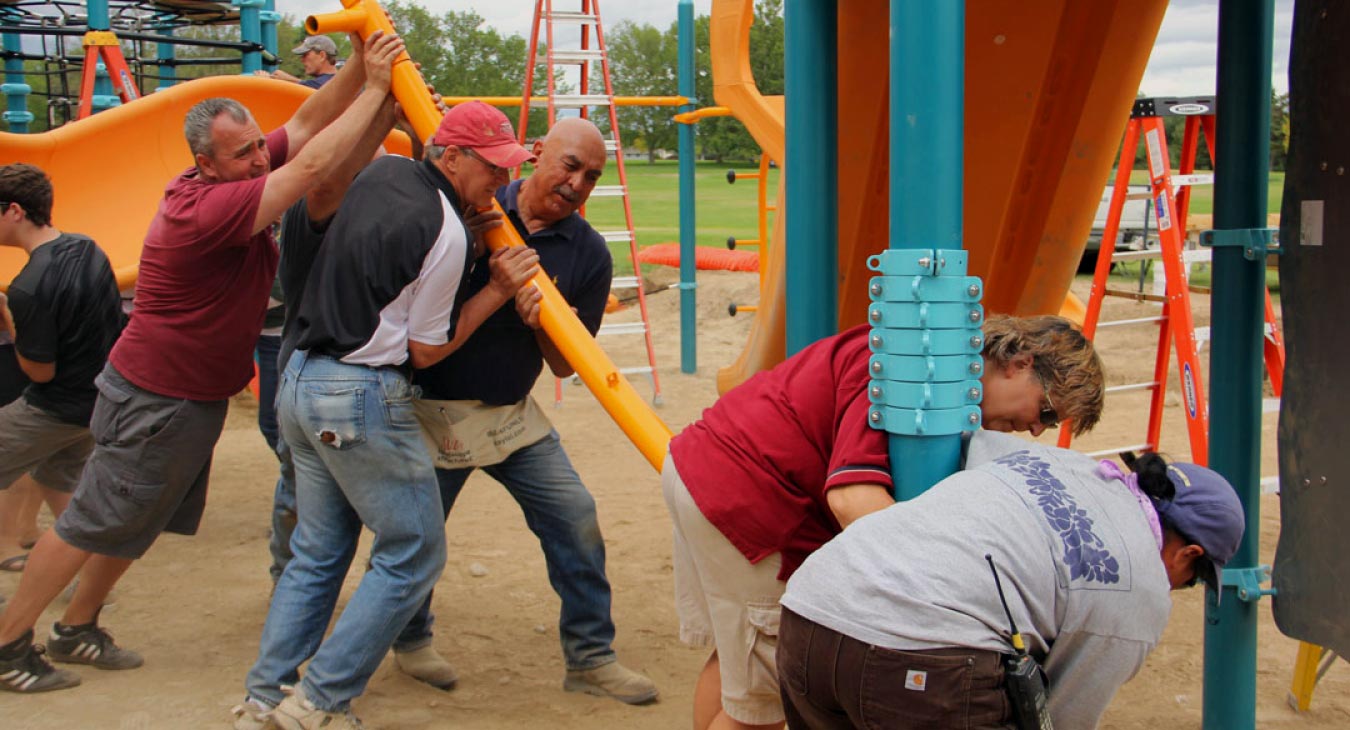Whether you need a shade structure for an outdoor playground, covered area for a church, or picnic area at a park, it's essential to know how to measure for the correct size shade structure. In this article, we will discuss why it's essential to consider the size of your shade structure and some tips on how to get the sizing right the first time.
New Structure vs. Existing Structure
One of the first things to determine when figuring out what size of shade structure you need is whether you need it for a new structure or an existing structure. If you have a new structure, one thing you might want to consider is purchasing a structure that comes installed with a shade structure. This works best for structures such as playgrounds. However, if the shade is already pre-fitted, you'll save a lot of time (and potentially money) in buying a combo system.
If you already have an existing structure, however, this won't work. In this case, you'll want to make sure that there is enough space for the shade structure on all sides to interfere with other structures or block entrances/exits. The last thing you want to do is buy a shade structure that is too big or too small for your space.
Structure Location
Next, you need to think about the location of your structure.
- Is it close to other objects or structures such as buildings, parking lots, basketball courts, etc.?
- Do you need it for an outdoor playground or other areas where equipment needs protection from the sun's harmful UV rays?
Different locations will need different shade structures, so it's essential to take the time and consider your space. For example, if you're looking for a structure in an area where equipment needs protection from UV rays, then make sure that there are some trees or other shades nearby -- this can also help protect your users.
Required Structure Coverage Area
Sometimes the structure you want to cover with a shade isn't the size of the actual shade you need. In addition, there might be additional areas outside of your structure area that also need to be covered with the shade.
For this reason, it's essential to measure the size of the shade structure that you need in relation to your desired coverage area. In addition, you want to be sure that there is enough space between objects or structures. The next step would be to figure out how much additional area needs covered outside of your structure so you can figure out what size shade system will work best for those areas.
Height of the Structure
It's important to consider the height of your shade structure based on the location. For example, if you need a structure for an outdoor playground, you'll need the shade to be much higher than the tallest part of the structure. On the other hand, if the shade is too short, there's a chance that users of the structure could interfere (either intentionally or unintentionally) with the shade structure, which could negatively affect the structural stability of the shade.
Height is also significant due to visibility. A taller shade structure will provide more than a lower height depending on where you are located and why you need the structure. Finally, height is important when considering how much surface area it offers as well. For example, a taller shade structure will have a larger coverage area than shorter ones, which might be necessary for specific locations.
Weather
Surprisingly, weather plays a vital role in helping to decide the size of your shade structure. One thing to keep in mind is that weather is different depending on geographical location. For example, one city might experience all four seasons of the year and you'll need to account for a shade structure that can hold up during each of them.
On the other hand, another city might only experience sun year-round and so won't have to worry about a shade that works in the snow.
Here are some questions to ask yourself to help you better understand how weather can affect the size of your shade structure:
- How intense is the sun during different times of the year?
- How much sun/rain/snow does your particular community get during the year?
- What are the wind speeds in your area, and from what direction do they blow?
It's important to account for these weather conditions when deciding on size. The last thing you want to do is buy a shade system that won't hold up as well during certain times of the year, and you may not even have enough room if it doesn't fit properly.
One of the best ways to judge the size of shade structure you need based on weather is to check out your structure at various times throughout the day and notice where the sun shines in relation to your structure at each of those times.
Ideally, it would be best if you went at least in the early morning, noon, and late afternoon to get a better idea of your shade requirements at different times of the day.
Another thing to think about is the time of day when your structure will most likely be used. If you have a pavilion, for example, that will only be used on Sunday afternoons, make sure your shade will provide maximum coverage during that time. There would be less need to provide coverage during the morning or late afternoon.
Just as a rule: bigger isn't always better when it comes to shade structures! Sometimes, an oversized shelter might not protect sun exposure because the shadows are cast onto other surfaces such as buildings or parking lots rather than on the ground.
In this case, it's crucial to get the right size for your particular needs, so you don't waste money on something that doesn't suit what you need or blocks other people from having access to the structure.
Research Any Local Regulations or Ordinances
Some places have specific ordinances or regulations related to shade structures. For example, it's illegal for a structure taller than a certain height to be built in many cities without first consulting the city council and zoning department. Therefore, you'll need their permission before you can go ahead with such projects.
Understand the Nature of Shade Structures
One last thing to remember is that shade structures are typically quite large. This is because shade structures need to cover the area of the structure itself and the supports holding up the structure. Different structures like playgrounds have different requirements when it comes to this. For example, with playgrounds, the structural posts have to be at least six feet from the playground. That is to ensure children won't run into the support beams.
Wrap Up
The proper shade structure can be a big money saver. It's important to make sure you've measured your space correctly before buying the materials for this project. Otherwise, you could end up wasting hours of effort on something that doesn't fit in the first place! If you need help measuring or want some basic tips about choosing the best size shade structure for your playground needs, we're here to guide you every step of the way.

